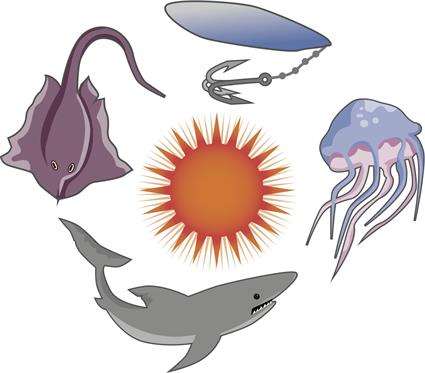Beach Safety Tips
Jul 21, 2016,
08:24 AM
by
Dr. Madiha Khan, assistant professor, Department of Family Medicine

- Good swimming skills make a big difference. Ocean swimming is different from pool swimming—be prepared to deal with strong surf and changing conditions. Be sure that you are able to safely manage the waters, and use the buddy system when swimming. Adequate adult supervision, swimming with a partner, appropriate use of personal flotation devices and swimming lessons can significantly reduce the risk of injury and drowning in children.
- Know the warning signs. Different beaches have different colored flags and assigned meanings, so ask a lifeguard if you are unsure what a flag signifies. Generally, red flags indicate strong surf and currents, yellow flags indicate moderate surf and currents, and green flags indicate the ocean is calm or clear.
- Be aware of rip currents. When in the Gulf or ocean, steer clear of rip currents, which are powerful, channeled currents of water flowing away from shore. If you get caught in a rip current stay calm and don’t tire yourself out by going against the current to head straight for land. Rather, stay calm and swim horizontal to the shore until you’re out of the current. Then, turn and swim diagonally until you make it to shore.
- Protect your skin. Sunburn is a common beach hazard that increases your risk of skin cancer and is painful. You can protect yourself from getting too much sun exposure by wearing protective clothing and hats, and always using sunblock. Sunscreens should be applied15 to 30 minutes before sun exposure to allow the formation of a protective film on the skin and reapplied at least every two hours. Because all sunscreens are washed off upon swimming or sweating, reapplication after swimming is needed even for sunscreen products labeled as “water resistant.” Sunburn can be treated with cool compresses and aloe vera gel or calamine lotion.
- Prevent heat-related illnesses. Muscle cramps, heat exhaustion and heat stroke can all result from dehydration and extended exposure to high temperatures. Make sure to drink plenty of water and avoid dehydrating beverages such as coffee or alcohol. If you or someone you’re with experiences symptoms such as weakness, headache, muscle cramps, nausea, dizziness, rapid heartbeat and confusion, get out of the sun to a cool, shaded area and remove excess clothing. Lie down flat, elevate the legs and give fluids that contain sodium such as a sports drink. Cool the skin with wet compresses. If symptoms are severe or do not resolve in 15 minutes, seek medical attention.
- Watch out for glass and other litter, broken shells, crabs and jellyfish on the beach and in the water. A simple way to lower your chances of hurting your feet is to make sure you wear beach shoes. Also, don’t stomp your feet in shallow waters, as this can frighten creatures that live there, such as small sharks and fish.
- Stay away from jellyfish, even if you see one washed up on the beach—the tentacles can still sting. Most jellyfish stings are minor and can be treated by removing tentacles from the skin with a credit card, soaking in hot water for 20 minutes and using numbing medications on the skin such as lidocaine. If a jellyfish stings someone and they appear to be having a serious reaction, seek medical attention immediately.